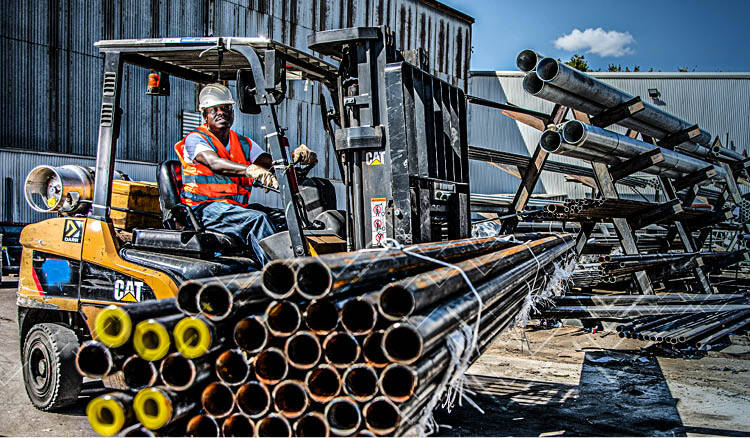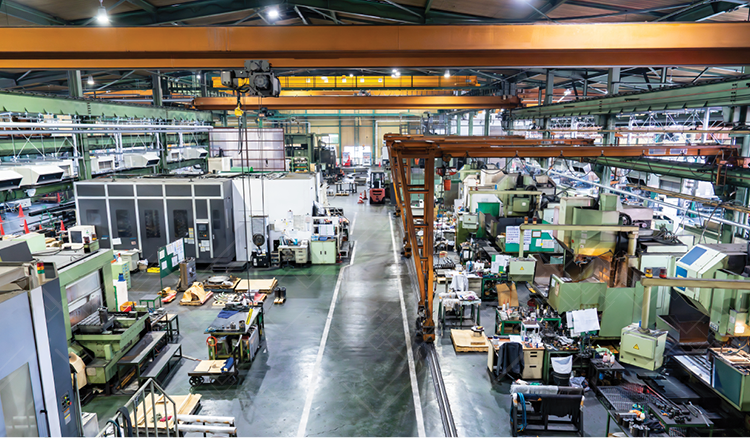How On-Demand Labor Helps Building Material Suppliers Tackle Spikes In Demand
Building material suppliers typically experience a peak season in parallel with “construction season” which is marked by warmer weather and typically occurs between April and October each year. This range can differ however depending on geographic location.
There are also less predictable spikes in demand that occur throughout the year such as in the aftermath of natural disasters like hurricanes and tornadoes. Regardless of when peak season or these other demand spikes actually occur, they present significant opportunities to grow revenue and increase market share.
In this article, we’ll cover how our on-demand labor model allows building material suppliers to capitalize on these demand spikes and establish a competitive advantage in the process.
Pitfalls Of The Traditional Approach
Preparing for peak season has traditionally entailed going through the lengthy process of hiring a crew of seasonal workers to meet average demand throughout the busier months. The problem with this approach though is that no matter how hard we try, we can’t see the future.
When demand comes in over plan, you’ll be paying time and a half and will struggle to get all orders out on-time. Direct hiring or trying to flex headcount through staffing agencies is far too slow to be able to respond to a daily or weekly demand increase, not to mention the fact that it’s probably not even worth all the administrative effort if the spike won’t last more than a week or two. This opens the door for more agile competitors to capitalize on these opportunities and increase their market share.
On the flip side, if demand suddenly dips below normal levels for a few weeks, you’ll be overstaffed and burning through your margins. This is a terrible spot to be in, especially if it occurs during your busier season. In this case it’s not worth laying off some of your seasonal workers when more than likely you’ll need them again in the coming weeks. This means you're forced to just accept the increased costs and hope that demand comes back soon.
Furthermore, in the case of turnover you could be shorthanded for weeks until you find a suitable replacement. What happens if your sales team just landed a huge account? In this case you won't have several weeks to go recruit, screen, hire, and train candidates… You also can't afford to disappoint the customer - in an industry where everyone works within tight deadlines, late deliveries not only throw a wrench into even the best-laid plans, but can completely destroy your reputation in the industry. Think about a contractor - they need the materials exactly when you promised them. When materials don’t arrive on-time, their workers are then sitting around idle with nothing to do and this results in project delays and missed deadlines. If you can’t deliver on-time, or can’t respond quickly, your customers will find the materials somewhere else and you’ll lose the sale. Even if they have to pay slightly more for materials from your competitor, it’s still cheaper for them in the long-run than missing project deadlines and having to pay workers to stand around while they wait for you to deliver.
The bottom line is, planning for averages leads to average performance. This is why operational agility is so crucial.
Tackling Demand Spikes With Operational Agility
With our on-demand labor model, you can say goodbye to planning your operations based on averages and hoping for the best. You’ll also be able to skip the laborious annual hiring process you would normally have to start months ahead of your peak season.
When you build your labor pool, you gain the ability to respond in real-time to demand. This means when demand suddenly spikes out of nowhere, you can adjust your headcount accordingly at the click of a button and address the extra workload without fear of late deliveries or having to ask your staff to work overtime.
Instead of going through the annual hiring cycle to increase your headcount and meet your average demand during your busy season (green dotted line), just keep your headcount at your minimum volume (yellow dotted line). As demand comes in above that minimum headcount, that’s when you leverage your flexible capacity. When your volume is lower, (closer to the yellow dotted line), reduce flexible capacity usage accordingly and now you’re perfectly right sized to meet that level of demand. By matching capacity to demand on a daily basis, cost per unit will now remain the same across all demand scenarios.

This approach gives you the best of both worlds - by maintaining a leaner headcount and using flexible capacity as needed, you can be aggressive and capitalize on every opportunity that comes your way while simultaneously creating down-cycle agility and creating a layer of protection for your business.
Additionally, building a labor pool will help you increase retention and morale among your full time workforce as they'll have more predictable schedules with less overtime, and more flexibility to take time off. You can read more about why this is in our article about how the use of on-demand labor impacts full-time employees.
Common Tasks for Veryable Operators

In building material supplier environments, Veryable operators commonly assist with a multitude of tasks including:
-Order picking
-Pallet & crate building
-Forklift operations
-Inventory scanning & counting
-Cleaning/Sanitation
-Tough shifts (weekends, overnight shifts)
-Delivery assistant/Driver helper
Between the thousands of skilled and vetted workers on the Veryable platform and the meritocratic nature of the rating and review system, you can find workers with the exact skill sets needed who are ready to work when you need them. With staffing agencies you don’t really know who you’re getting and if the worker they sent you isn’t a good fit or quits after a few days, it’s not necessarily guaranteed that you’ll have an immediate replacement in the next day that’s any better. With direct hiring, you could spend weeks going through the process with a candidate only to have them not live up to your expectations or leave after a week to go work across the street at a company that pays them $0.25 more per hour.
Stories From The Real World - Capitalizing On Post-Natural Disaster Demand Spikes to Increase Market Share

On July 8th, Hurricane Beryl swept through the Greater Houston Metroplex, devastating the region and causing an estimated $2-$3 billion in property damage. With numerous structures needing to be repaired or rebuilt in the coming months, this presents a massive opportunity for building materials suppliers, but only for those who have the agility to react fast with their labor.
The suppliers who have built on-demand labor pools have been able to instantly scale up with just a few clicks and meet this increased demand as well as gain new market share while their competitors all compete for the same resources and struggle to scale up fast enough.
In the aftermath of events like this, many businesses will be operating with a lower headcount as it is due to the fact that their employees are dealing with personal issues. Furthermore, if your business had to shut down for a few days, chances are there will be a huge backlog of orders to catch up on. Trying to catch up on backlog with a skeleton crew is a bad spot to be in - this forces you to rely heavily on overtime in the short run to keep up which may burn an even bigger hole in your headcount. At this point, winning new business and increasing your market share isn’t even in question and you’d be lucky just to maintain your current position in the market.
This is why operational agility is so important. While peak seasons are somewhat predictable, events like these are not. With only a fixed workforce, your business is simply ill equipped to handle these events and this not only leads to headaches and excess costs, but it leaves the door wide open for your competitors.
To learn more about how on-demand labor helps businesses adapt to these unexpected challenges, read our recent article: “Weather The Storm With The Help of Veryable”.
Conclusion
Every supplier wants to be an industry leader and to achieve this, greater agility and flexibility is needed. By building an on-demand labor pool, you’ll be able to cost-effectively delight your customers with best in-class service regardless of volume, and grow your market share by capitalizing on opportunities that your competitors can’t due to capacity constraints.
How to get started with on-demand labor
To get started with on-demand labor, take 5 minutes to create your free business profile. If you need help or have any questions, please contact your local office.
Previous Posts
What Uneven Demand Means for Operational Planning in Manufacturing and Logistics in 2026
The Future of Manufacturing and Logistics
Create a free business profile today to explore our platform.






